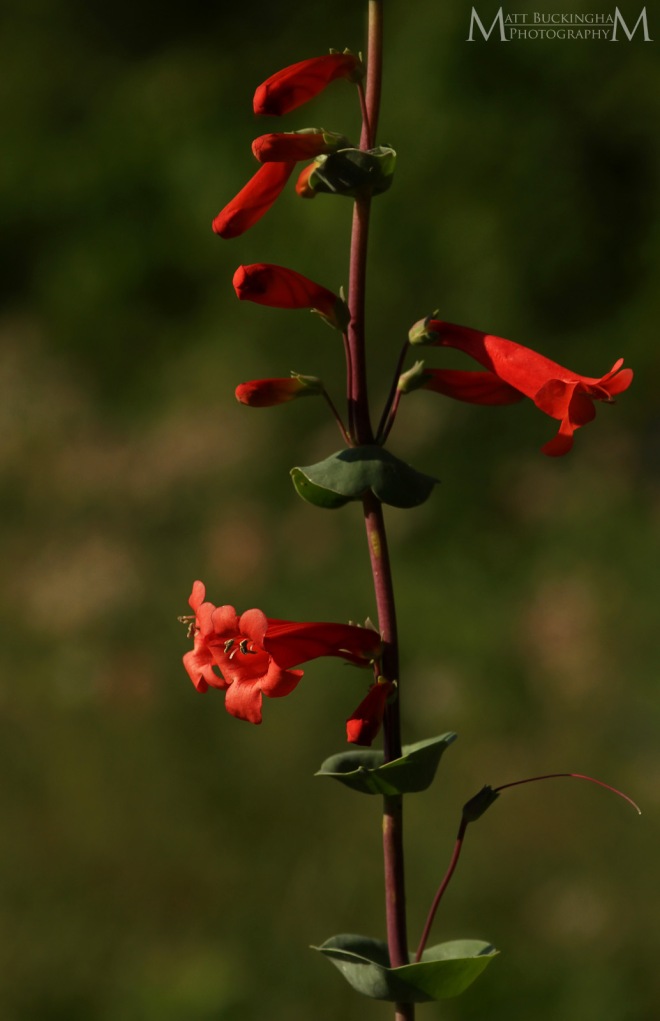
Gulf Crayfish Snake
May saw four more species crossed of my 2017 list of biodiversity goals, including my first animal. While I am lagging behind on my list, I was able to capture images of some interesting species not on my list, as well as some beautiful landscapes. The following are the target species I was able to photograph in May:
Smooth Jewelflower (Streptanthus hyacinthoides)
Centerville Brazos Mint (Brazoria truncata var. pulcherrima)
Purple Bladderwort (Utricularia purpurea)
River Otter (Lontra canadensis)

I explored a variety of habitats in May, however it was largely dominated by forays into a number of xeric sandhills. Both the Smooth Jewelflower and Centerville Brazos Mint make their home in these unique communities, and more information can be found in their blog entries linked above. The following images are of a pair interesting West Gulf Coastal Plain near endemics.

Prairie Milkvine (Matelea cynanchoides)

Scarlet Penstemon (Penstemon murrayanus)
Each year in May I look forward to visiting the wetland pine savannahs and hillside seeps of the Big Thicket. This is the peak bloom time for the spectacular Grass Pink Orchid (Calopogon tuberosus). In East Texas, they typically grow in the company of the carnivorous Pale Pitcher Plant (Sarracenia alata) which captures insects in its tubular leaves. Here they are trapped and slowly digested to provide nutrients to the plant so that it may thrive in otherwise nutrient-poor soil.

Grass Pink Orchids and Pale Pitcher Plants
While I was photographing the orchids, Carolina found this blooming Sweetbay Magnolia (Magnolia virginiana) at the margins of a baygall nearby. The sweet aroma of these large flowers fills the air for much of May.

Sweetbay Magnolia blooms at the margin of a baygall.
While exploring a wetland near my house I found a large patch of blooming Lizard’s Tail (Saururus cernuus). Though I didn’t have my camera with me at the time, I couldn’t pass up the opportunity to photograph this scene, and returned later. Lizard’s Tail grows in a variety of shallow wetlands.

Lizard’s Tail blooms in a forested wetland.
We spent our fair share of time among the Longleaf Pines as well. My friend James spotted this Slender Glass Lizard (Ophisaurus attenuatus). The common name glass lizard comes from this genus’s propensity for caudal autonomy. This is the familiar action of a lizard dropping its tail in response to a predator threat. In the glass lizard, however, the tail makes up over half of its body, and contains several fracture points. This can result in an individual seeming to break into pieces when being captured by a potential predator. Though they may seem fragile, careful, gentle handling helps ensure that they remain in tact. Though they are typically associated with sandy habitats, they are not proficient burrowers, but rather “swim” through dense grasses.

Slender Glass Lizard

Slender Glass Lizard
While on a gem/mineral hunting expedition Carolina and I spotted this Spicebush Swallowtail (Papilio troilus) nectaring on Butterfly Weed (Asclepias tuberosa).

Spicebush Swallowtail nectaring on Butterfly Weed
The impressive blooms of the Giant Coneflower (Rudbeckia maxima) can sit atop stalks that might reach 8 feet tall. R. maxima is endemic to the West Gulf Coastal Plain. In East Texas it occurs in scattered populations in open woodlands and prairie pockets.

Giant Coneflower
Carolina spotted this Black Swallowtail (Papilio polyxenes) while we were photographing Giant Coneflowers along the roadside. To me this is one of our most beautiful larval insects.

Black Swallowtail Caterpillar
Pointed Phlox (Phlox cuspidata) is primarily a species of Central Texas, however it enters Deep East Texas in the understory of Longleaf Pine Savannahs, where it is much less common.

Pointed Phlox
Fire is an integral part of maintaining Longleaf Pine Savannahs. In the image below Butterfly Weed can be seen blooming following a prescribed burn.

Butterfly Weed blooms following a prescribed burn
I found this flowering Groundnut (Apios americana) in a park near my house.

Grountnut
Growing near the Groundnut was this Anglepod (Gonolobus superosus). This member of the milkweed family (Asclepiaceae) forms vines in open woods and forest edges.

Anglepod
Our close friends James and Erin recently built a cabin on their 200+ acres in Angelina County. The property contains pasture, fallow fields, mixed pine-hardwood forest, a forested stream, and several ponds. It makes for excellent herping opportunities. During our visit we went out to see what we might turn up.

Eastern Mud Turtle (Kinosternon subrubrum)
I caught this large, attractive Yellow-bellied Water Snake (Nerodia erythrogaster flavigaster) at one of the ponds at night. For those who have never caught a water snake, they are notoriously foul-tempered and have an extremely offensive musk, which they promptly rub all over their captor. It makes handling them an unpleasant experience, but I’m glad we hung on to this one for photos the next day.

Yellow-bellied Water Snake

Yellow-bellied Water Snake
After catching we continued to walk along the pond. It wasn’t long before Carolina called out that she had seen another snake. I rushed to her spot and saw the head of a Gulf Crayfish Snake (Regina rigida sinicola) poking through the aquatic vegetation. I quickly grabbed it. We held onto it as well, and the next day we had a photo session with both snakes nearby. When we were done, we released the snakes where we caught them.

Gulf Crayfish Snake

Gulf Crayfish Snake
May provided several excellent opportunities for nature observation and photography. I look forward to what June will bring.
